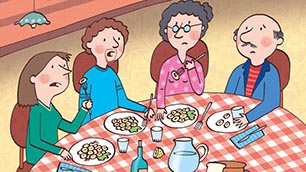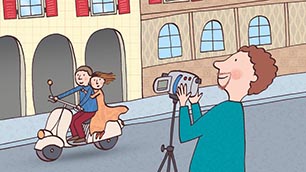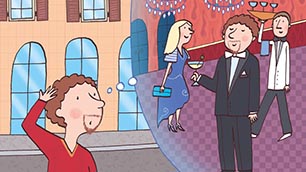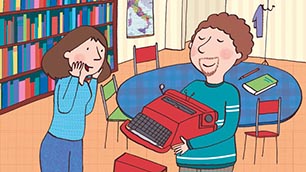I. Personal Pronouns and the Verb essere
The most commonly used personal subject pronouns in Italian are as follows.
| io → I | Lei → you (formal) | |
| tu → you | (informal) noi → we | |
| lui → he | voi → you (plural) | |
| lei → she | loro → they |
In Italian, the verb essere means to be. In the following table you can see how it is conjugated with the personal pronouns.
| io sono → I am | noi siamo → we are | |
| tu sei → you are | voi siete → you are (plural) | |
| lui/lei/Lei è → he/she is / you are (formal) | loro sono → they are |
Often, the personal pronoun is omitted when speaking and writing. It is correct to use personal pronouns with conjugated verbs, but it is very common to omit them. See the following examples.
| Sono inglese. | I am English. | |
| Sei francese? | Are you French? | |
| Sono tedeschi. | They are German. | |
| Siete Anastasia e Carlo, vero? | You are Anastasia and Carlo, true? |
Sometimes, particularly with the verb essere, personal pronouns are used after the verb to emphasize the subject or for the sake of clarity of expression.
| Sei tu, Raimondo? | Is that YOU, Raimondo? | |
| Sì, sono io! | Yes, it’s ME! |
II. Greetings
Everyone knows the most famous Italian greeting, ciao! This isn’t the only way Italians greet each other, however. Here is a list of greetings that you can use in many different situations.
| ciao! | hello, goodbye, bye (informal) | |
| salve! | hello, goodbye (formal) | |
| buongiorno! | hello/good morning/good afternoon (greeting used in the morning or early afternoon) | |
| buonasera! | hello/good evening (greeting used in the late afternoon and evening) | |
| buonanotte! | good night | |
| arrivederci! | goodbye (formal) | |
| scusa | excuse me (informal way of addressing somebody) | |
| scusi | excuse me (formal way of addressing somebody) |
III. Introductions
There are a few simple ways to introduce yourself when meeting someone new in Italian. Right now, we are going to learn how to ask someone his/her name and how to tell someone your name.
Above, we have learned the verb essere, which means to be. You can use this verb to tell someone your name and ask someone their name. For example:
| Sono Eleonora. | I am Eleonora. | |
| Ciao, tu sei Cinzia? | Hi, are you Cinzia? | |
| Chi sei? / Tu chi sei? | Who are you? |
The last example above is a little harsh if you ask someone their name, in both English and Italian! We can also use the verb chiamarsi, which means to be called and can be translated in this case as my name is.
| Mi chiamo Eleonora. | My name is Eleonora. | |
| Buongiorno, come ti chiami? | Good morning, what is your name? | |
| Ti chiami Cinzia? | Your name is Cinzia? |
The verb chiamarsi is conjugated for all the subjects as follows:
| mi chiamo → my name is / I am called | ci chiamiamo → our name(s) are / we are called | |
| ti chiami → your name is / you are called | vi chiamate → your name(s) are (plural) / you are called | |
| si chiama → his/her name is / your name is (formal) / he/she/you are called | si chiamano → their name(s) are / they are called |
As we saw with essere, it is appropriate to omit the personal pronoun, as shown in the table above. Personal pronouns, however, are often used for the sake of emphasis or rhythmic balance. See the following examples.
| Buona sera, io mi chiamo Claudio. | Good evening, my name is Claudio. | |
| Come si chiamano? | What are their names? | |
| Ci chiamiamo Andrea e Michael. | Our names are Andrea and Michael. | |
| Lui si chiama Daniele. | He is called Daniele. |
IV. Negative Form
To form a negative sentence in Italian, the word non is usually placed in front of the verb.
| Io non mi chiamo Sara. | My name isn’t Sara. | |
| Non siamo italiani. | We aren’t Italian. | |
| Non è vero. | It isn’t true. | |
| Lei non è simpatica. | She isn’t nice. | |
| Non sono pronto. | I’m not ready. |





















